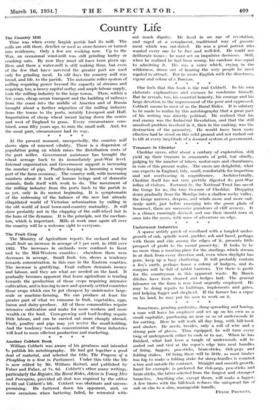Country Life
The Country Mill Time was when every largish parish had its mill. The mills are still there, derelict or used as store-houses or turned into residences. Only a few are working now. Up to the War, an occasional wind-mill was still grinding barley or crushing oats. By now they must all have been given up. Here and there a water-mill is still making flour, but even of the few that have survived the greater part are used only for grinding meal. In old days the country mill was bread, and life, to the parish. The automatic roller system of milling requiring power beyond the capacity of streams and requiring, too, a heavy capital outlay and ample labour supply, took the milling industry to the large towns. Then, within a few years, cheap ocean transport and the building of railways from the coast into the middle of America and of Russia brought about a further migration of the milling industry from the towns to the ports, notably Liverpool and Hull. Importation of cheap wheat meant laying down the centre and west of England to grass. Every circumstance com- bined, some fifty years ago, to ruin the small mill. And, for the most part, circumstance had its way.










































 Previous page
Previous page